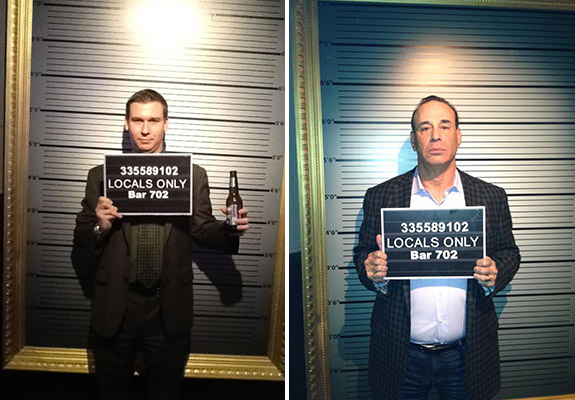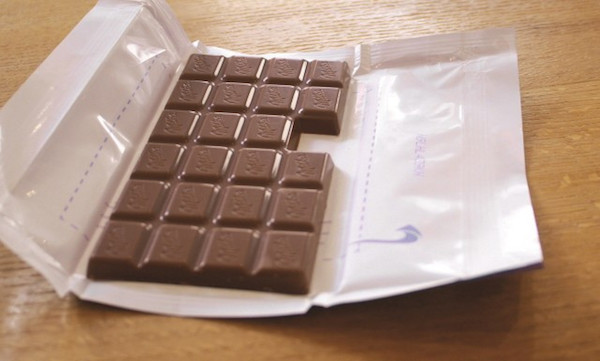Experiential marketing is a promotional strategy that involves creating an interactive experience to get customers talking about your product.
It's a unique take on attracting customers, as it relies heavily on creativity to capture attention and word of mouth. Costs can be variable, but are usually high in time spent -- this is definitely a guerilla tactic at heart and will rely more on thinking outside the box than shelling out the kind of money that's required for traditional advertising.
Perhaps it's easiest to explain the process by highlighting a few creative examples.
Creative Experiential Marketing Campaigns
1. Globetrotter weather rooms
In a novel case of allowing customers to "see it for themselves," the European sporting equipment company Globetrotter lets shoppers step into a rain chamber that douses them with water and simulates storm-grade winds. This is all while wearing Globetrotter equipment, of course.
If that weren't enough, many stores also have a freeze chamber where temperatures can drop to -30C, with an additional wind chill for good measure.
The outlandish nature of these stunts has come under fire from onlookers, but fans of the store have stated that testing the heavy-duty (and often very expensive) sportswear in simulated conditions really does help:
It might seem gimmicky or wasteful at first, but once having had the pleasure of working for a couple days counting fish in a -18F walk in freezer, I can tell you that having the right gear really matters.
Not only does Globetrotter benefit from the natural word of mouth as onlookers watch in amazement, but prospective customers get to wear their gear right in the store, making the experience much more valuable than just a marketing gimmick.
2. Jump with Derrick Rose
In the sneakerhead culture, a lot of attention and hype can be drummed up from the release of a new shoe. In order to get the ball rolling for a new line of sneakers from pro basketball player Derrick Rose, Adidas launched -- and filmed -- the simple but brilliant "Jump with Derrick" campaign.
Rose, known for his incredible vertical leap, was a great choice to inspire a competition to challenge average Joes to reach a 10-foot tall platform.
If participants were able to touch the small shelf (placed at the height of the standard NBA rim), they were awarded a free pair of Rose's new Adidas sneakers.
Doubling down on the popular contest, Adidas filmed the events and released a video that showcased participants trying (and sometimes succeeding) to win the sneakers.
3. Unlock your inner 007
Great experiential marketing campaigns are often able to create scenarios that pull in non-participants as well. For example, the classic viral video for Carrie was able to grab the attention of everyone inside of a coffee shop.
This next example fits the bill as well: Coca-Cola, in a joint promotion with the James Bond film Skyfall, created the "Unlock the 007 in You" campaign, where participants were randomly chosen at a kiosk to win a free pair of movie tickets to see Daniel Craig as Bond.
The catch? They had to make it to a second kiosk in under 70 seconds. To make it even more difficult, typical James Bond obstacles came across their path at every turn.
The great part about this chase, as with the Carrie video, was that a large crowd tended to form just to find out what was going on.
4. Bar 702's mugshot photobooth
Are some of the examples above a little too rich for your taste? Remember that a unique customer experience doesn't have to be an expensive one.
On the show Bar Rescue, host and hospitality consultant Jon Taffer has always talked to struggling bar owners about creating something in their bar that's worth talking about.
When fixing Bar 702, Taffer decided it would be great to have something that customers would enjoy taking pictures of. Ideally, if customers take a picture of something in a bar, they are very likely to share it with friends on social media -- nights out being one of the most common times to capture and post photos.
The solution was a open photo booth where patrons could get their picture snapped as a mugshot, ensuring all sorts of crazy photos that people were bound to share on social media.
(Left, a patron snapping a photo. Right, Bar Rescue host Jon Taffer)
Inexpensive, but very effective in creating a simple, shareable experience that encourages people to talk about a business they've come across.
5. Grape stomping and flying futags
Although creating a marketable experience isn't limited to hosting an event, events are certainly an important part of the experiential marketing ecosystem.
As a fan of target shooting, I can tell you that my local gun range got me as a customer long ago during their Christmas shoot off, which, funny enough, involves shooting Christmas tree decorations off of a tree. Yikes!
For a less aggressive take on events leading to new customers, you can look at examples like wine festivals. Although made to move bottles of wine, these festivals often focus on the experience, such as kicking off your shoes and stomping some grapes for yourself like they do at the Rioja wine festival.
Last but not least, a more extreme example shows how events can become full on spectacles that draw thousands of people each year. Red Bull's "flugtag", as it's known, invites participants to create handmade flying machines and fly them straight off a peer.
It's a play to grab attention for sure, but it's also an exceptional tie-in to Red Bull's overall strategy to appeal to high energy, creative individuals.
6. Paying it forward with chocolate
With all of the focus on nabbing attention in the previous examples, you might enjoy this more endearing use of a unique customer experience.
Chocolate company Milka started a campaign where they would purposefully leave out a single square of chocolate from a purchased bar. It's a small amount but one that would instantly be recognized by customers.
The reason? Milka offered to either mail the missing piece to them, or the customer could choose to send the chocolate to someone else with a personal note.
It's a small gesture from those "lucky" enough to receive a defective chocolate bar, but as we know, the small things can leave a big impact, and a thoughtful note with a piece of chocolate went a long way in spreading goodwill -- and in raising awareness for Milka.
The traits of a successful campaign
Now that we've talked about a few success stories, let's break down some common factors seen in each campaign. By and large, a successful experiential marketing campaign should hit most, if not all, of the following bullet points:
Product tie-in is a must. Whether it's through the use of the product itself (Globetrotter, Milka) or an explicit tie-in with the brand (the high energy nature of James Bond and Red Bull), any experience targeting prospective customers needs to weave in a selling aspect. It's not enough to simply entertain customers; they also need to be motivated in some way to investigate and purchase the product.
Creativity above all else. As we saw with the mugshot photo booth, things that capture people's imagination to the point where they simply must share it is a key ingredient to a successful campaign. Companies have spent millions on failed tests simply because they thought money would bring attention to a boring, unoriginal angle.
Conducive to building a crowd. Great experiences are shared, either by drawing a crowd to watch (James Bond) or by creating an experience that is better when shared with others. You can imagine the flugtag event being a bust without the competitive element, or that the mugshot attraction could have tanked if it had been made a private (rather than open) photobooth area.
Listen to feedback. What good would Globetrotter's freeze rooms be if they didn't listen to customer feedback? Even fun campaigns can get customers talking about products in ways that you might not expect, and if nothing else, you can learn what does and does not resonate with your audience in terms of keeping their interest.
Ultimately, the best ideas and execution will come from knowing your industry and your market well. If you can check off the list above, you are certainly covering all your bases for success.
Learn more about what our B&M Financial Management Business Consulting Services can do for you. Click here or contact us for further information.
Source: http://www.inc.com/
Image Credit: Getty Images
Theresa Todman, Managing Partner/CEO of B&M Financial Management Services, LLC . Theresa specializes in bookkeeping, accounting, QuickBooks solutions, small business tax issues and consulting.















No comments:
Post a Comment